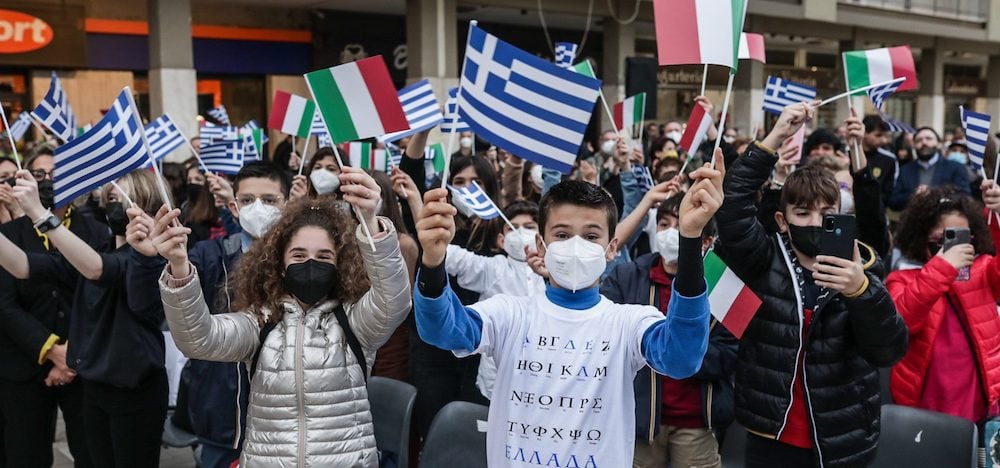
Greek President Katerina Sakellaropoulou visited a number of Greek-speaking villages in Southern Italy this weekend.
Sakellaropoulou visited villages in Salento, Italy, where the Greek dialect of Griko is still spoken by thousands of people.
The Greek President was welcomed to the region by Roberto Casaluci, the President of the region’s Union of Greek-Speaking Communities, in honor of the 20th anniversary of the group’s founding.
The Union of Greek-Speaking Communities of Grecia Salentina represents the thousands of residents of the region who still speak Griko and uphold their Hellenic traditions.
Greek-Speaking villages in southern Italy retain culture, language
There are two minority Greek languages officially recognized in Italy’s south. Greko and Griko—the first spoken in Calabria and the second in Salento—are both timeless testaments to the ancient Greeks’ colonization of southern Italy in the 8th and 7th centuries B.C. some 2,700 years ago.
With a high estimate of only 20,000 (mostly elderly) people speaking Griko today, there is reason to fear that this ancient language may soon die off. Some estimates place the actual number at only around 2,000 total Griko speakers.
President Sakellaropoulou honored the local organization for its attempts at preserving the region’s unique traditions and language, stating:
“It is difficult to put how moved I am at being here today into words, being in a place where our shared past is currently coming alive…I see the signs in Griko along the road, I hear Griko coming from the mouths of both older people and young people learning and loving the language… here where the ancient Greek colonies of Magna Grecia blossomed.”
“Greece and Italy make up two historic members of our European family, and are connected by strong and long-lasting bonds of friendship,” the Greek President stressed.
She further argues that “it is particularly important that, during the harrowing circumstances Europe is facing in the wake of Russia’s unprovoked invasion of Ukraine, our countries, focused on shared democratic values, remain guarantors of stability… a bridge of friendship, peace, and culture that has been linking humans since antiquity.”
Ancient Greek Colonies in the Southern Mediterranean and Magna Graecia
From 700 BC to 500 BC, the Greek colonies in the regions of Sicily and present-day mainland Italy multiplied, creating the area known as Magna Graecia.
According to modern historian Mogens Herman Hansen, more than 46 Greek colonies were founded in Sicily and more than 22 in southern Italy.
A “second Greece” of a kind was formed in these areas, which amounted to a population and area that was just a little smaller than metropolitan Greece, hence the name Magna Graecia.
The newer Greek residents were mostly from Rhodes and Crete as well as the Achaeans of Messinia. However, not all Greek colonies in today’s Italy were established peacefully.
Older settlers in these cities owned large estates cultivated by indigenous slaveholders; they formed a very insular aristocracy that reacted negatively to the economic and political advancement of the younger settlers.
See all the latest news from Greece and the world at Greekreporter.com. Contact our newsroom to report an update or send your story, photos and videos. Follow GR on Google News and subscribe here to our daily email!



